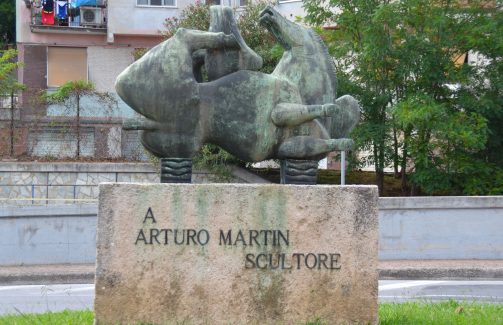The work, taken from master Martini’s original plaster casts, bears the signature of Roberto Bertagnin, his son-in-law and pupil.
The Pegasus was commissioned from Martini himself in 1941 by the city of Thiene, Veneto, in honor of the famous aviator Arturo Ferrarin, who died that year in a plane crash.
Within a few weeks Martini executed the sketch, in which the intent was clear to represent flight not as a set of fuselages and yaw axes, but as a thrust toward infinity.
It was the city of Vado Ligure, on the other hand, that believed in the work in 1965, when it commissioned his son-in-law Bertagnin to create a monument in honor of Arturo Martini. Bertagnin himself thus took up the sketch of the “Fallen Pegasus,” thus bringing his master’s unfinished work to completion.
And thus was born the idea of representing Pegasus, the winged horse born of Medusa’s blood, plunging into the sea. In fact, Martini mixed the representation of the winged horse with the myth of Icarus, who fell into the waters because he had come too close to the sun.
This did not please the city of Thiene, however, because it strayed too far from the figure of Ferrarin, also allowing a glimpse in the Fallen Pegasus of the end of an era, that of imperial Italy.









